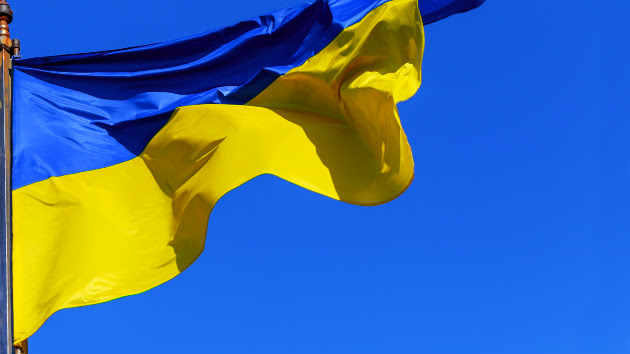(NEW YORK) — Russian President Vladimir Putin announced on Feb. 21, 2022, that he had recognized two Russian-backed separatist areas in eastern Ukraine, Donetsk and Luhansk, as independent states.
Ukrainian President Volodymyr Zelenskyy followed the announcement by saying that Ukraine had cut diplomatic ties with Russia. Putin then gave a speech on Feb. 24, 2022, announcing he would launch a “special military operation” in Ukraine.
Minutes after the announcement, explosions could be heard in Kyiv. What followed was a full-scale invasion of Ukraine, with thousands of troops crossing the country’s borders.
Russia seizes a quarter of Ukraine
In the early days of the invasion, it seemed as though Russians forces would enter the capital, Kyiv, after reaching the edge of the city very quickly.
Russia had planned to topple the Ukrainian government within days of the invasion, but Putin and other officials had underestimated the strength of Ukraine’s resistance.
By March 19, Russian troops had seized about a quarter of Ukraine’s territory.
Western countries respond
The U.S. and its allies announced a wave of sanctions and trade controls against Russia in response to the invasion, along with its recognition of Donetsk and Luhansk as “independent” states.
Sanctions were placed on Russia’s biggest banks, Russian elites and their families. The imposed sanctions restricted Russia’s ability to raise funds by adding additional prohibitions related to new debt and equity of major Russian state-owned enterprises and large privately owned financial institutions.
A turning point
At the beginning of April, it became clear that Russia lacked the forces it needed to take over Kyiv.
Russian forces retreated and abandoned nearly all the territory they had taken in the north of the besieged capital. As Russian troops retreated, they left behind a trail of horrors, which many observers would call human rights abuses.
Mass graves containing hundreds of murdered civilians were discovered in Bucha, a town outside Kyiv.
By late May, Russia was devastating Mariupol in the south, a city that became a symbol of Ukrainian resistance. After over three months of siege, Ukrainian troops were forced to surrender the city.
US supplies long-range weapons
By June, after retreating from Kyiv, Russia switched its focus to capturing eastern Ukraine, including the Donbas region.
What followed was a grueling artillery war, with Russia using its technical advantage and firepower to grind forward as Ukraine was battling to hold the line. The U.S. in July began to supply Ukraine with long range missile launchers, including U.S.-made High Mobility Artillery Rocket Systems.
Russia also began struggling with shortages of men and ammunitions, as Ukraine appeared to be taking control of the war.
Another turning point
A crucial turning point came in September, when Ukraine launched a spectacular counteroffensive in the northeast near Kyiv, collapsing Russia’s lines and liberating thousands of square miles of territory.
Some military analysts said the route Ukraine took put an end to Russia’s ability to go on the offensive. Russia was fighting to just hold on to the areas it has already captured.
By the fall, faced with the risk of full defeat, Putin declared a partial mobilization calling up 300,000 men. He began making threats about striking Ukraine with nuclear weapons.
On Sept. 30, desperate to hold on to Russia’s war gains, Putin declared that he had annexed four Ukrainian regions: Zaporizhia, Luhansk, Donetsk and Kherson. But Russia didn’t at the time fully control any of them. It lost the capital of one within weeks of Putin’s declaration.
The U.S. and other western allies announced another wave of sanctions in response.
Ukraine liberates Kherson
In November Ukraine liberated Kherson, one of the regions Putin had annexed. Russian troops were forced to withdraw.
Ukrainian Foreign Minister Dmytro Kuleba met days later with U.S. Secretary of State Antony Blinken in Cambodia.
The success in Kherson “is a testament once again to the remarkable courage of the Ukrainian armed forces, the Ukrainian people, as well as the strong support that Ukraine has from countries around the world,” including the U.S., Blinken said ahead of their talks.
Russia changes its strategy
By the fall, Russia appeared to shift its strategy as it launched a massive campaign to destroy Ukraine’s energy infrastructure. Human rights groups would accuse Russia of attempting to freeze Ukrainians as winter approaches.
There were Russian barrages of cruise missiles and Iranian supplied kamikaze drones causing nationwide blackouts in Ukraine.
Ukraine continued throughout the winter to call on Western countries to provide it with better air defense and more weapons.
By December, the war was focused on the eastern Ukrainian city of Bakhmut as Russia brought in thousands of troops into the battle.
First Russian gain in months
In January, Russia made its first gain in months, capturing the small town of Soledar.
U.S. President Joe Biden on Jan. 25 agreed to give Ukraine heavy tanks, clearing the way for Germany and other European allies to do the same for the first time.
At the one-year mark
As the first anniversary of the invasion approached, Biden arrived in Kyiv on an unannounced trip. He met with Zelenskyy and other high-ranking officials, before announcing an additional $500 million in aid.
Putin the next day, on Feb. 21, 2023, announced during his state-of-the-union address in Moscow that he had suspended the key U.S.-Russia nuclear treaty, opening the possibility for new nuclear tests.
Ukraine has liberated nearly 30,000 square miles of its territory since the Russian invasion began. But Putin appears to be preparing Russia for a long war.
Copyright © 2023, ABC Audio. All rights reserved.












